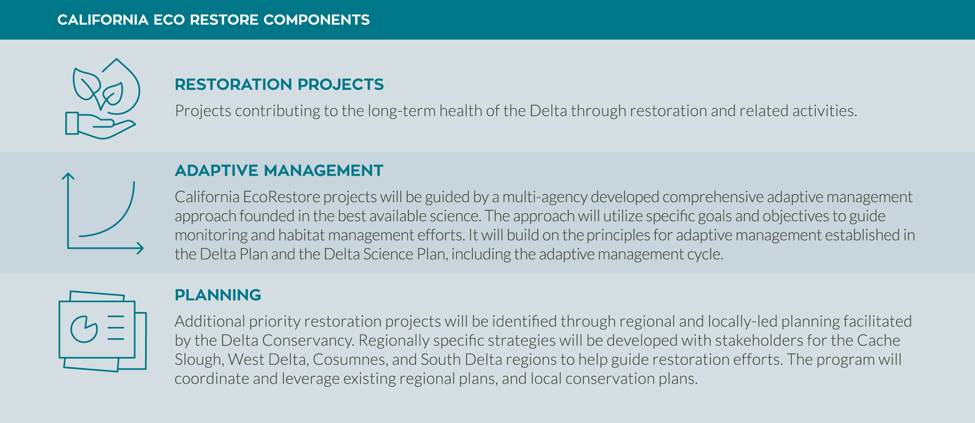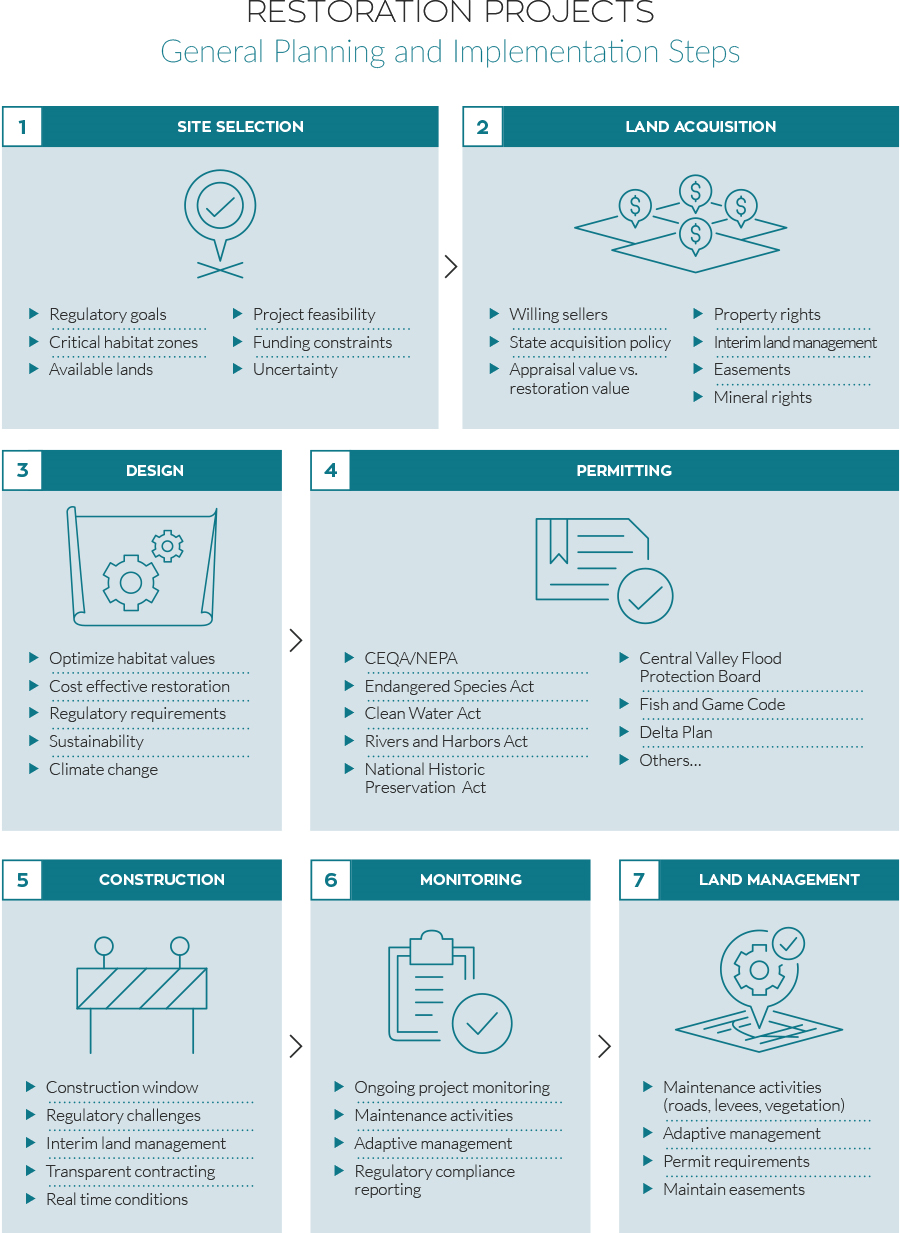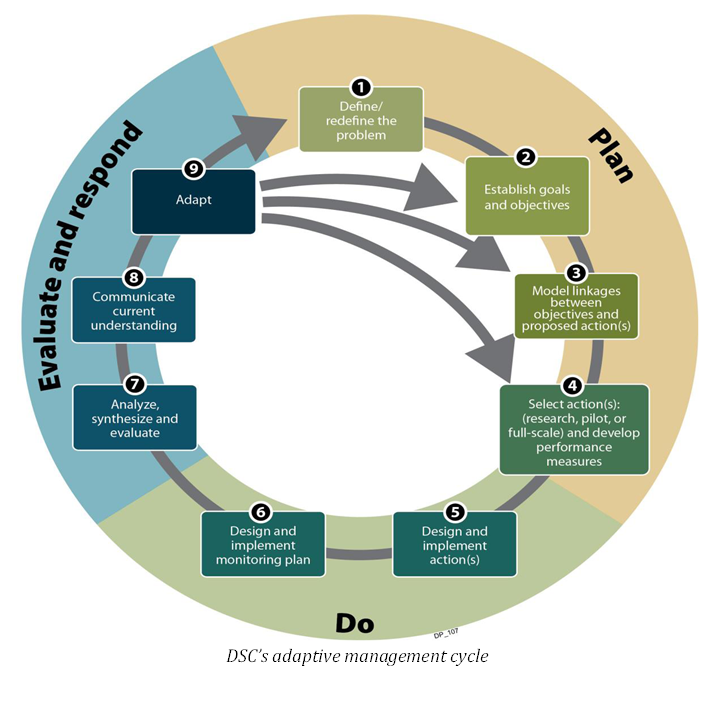California EcoRestore is an initiative to help coordinate and advance at least 30,000 acres of critical habitat restoration in the Sacramento – San Joaquin Delta (Delta) by 2020. Driven by world-class science, guided by adaptive management, and implemented through multi-agency coordination and management, California EcoRestore will aggressively pursue habitat restoration projects with clearly defined goals, measurable objectives, and financial resources to help ensure success.
The program includes a broad range of habitat restoration projects, including aquatic, sub-tidal, tidal, riparian, flood plain, and upland ecosystem.
California EcoRestore’ will advance (i.e. complete or break ground on) at least 30,000 acres of Delta habitat restoration:
- 25,000 acres associated with existing mandates for habitat restoration, pursuant to federal biological opinions to support native fish species recovery including projects aimed at tidal marsh creation, floodplain habitat restoration, and fish passage improvement. These projects will be funded exclusively by the state and federal water contractors that benefit from the State Water Project (SWP) and the Central Valley Project (CVP) systems.
- 5,000 acres of habitat enhancements throughout the Delta supported by Proposition 1 grants to local governments, non-profit organizations, and other entities. Funding will come primarily from the Delta Conservancy, the California Department of Fish and Wildlife, and the California Department of Water Resources.
Importance of Restoration
Today’s Delta hardly resembles what it did 150 years ago. During and after the Gold Rush, Delta channels were straightened, fertile floodplains were lost, and riparian forests were replaced with steep levees. The Delta’s rich marshlands were ‘reclaimed’ for agricultural use. And with increased trade and economic growth came invasive plants and animals that now make up the majority of the Delta’s total biomass, such as Asian clams and Brazilian waterweed. California EcoRestore will address these legacy impacts, as well as effects from the ongoing operation of the state and federal water projects.
Restoration Projects General Planning and Implementation Steps
Largescale tidal and floodplain restoration is a new challenge for California. The graphic below provides a general overview of the planning process and constraints facing many of the restoration projects in the Delta under the California EcoRestore program. Each project is unique due to the location, design, and ecological objectives, and will have specific challenges and limitations that may not be represented in this general process graphic. The graphic helps demonstrate why high-level coordination is needed in order to build on the lessons learned as the State gains experience in implementing largescale restoration.
Funding
Costs for California EcoRestore projects are expected to reach at least $300 million in the first four years, the majority of which will be borne by the state and federal public water agencies currently required to mitigate the ecological impacts of the SWP and CVP in the Delta.
Funding for habitat enhancements unassociated with mitigation will come primarily from Propositions 1 and 1E, the AB 32 Greenhouse Gas Reduction Fund, and local, federal, and private investment.
Adaptive Management
Adaptive Management is a key component of the California EcoRestore program. California EcoRestore projects will be guided by a multi-agency developed comprehensive adaptive management approach founded in the best available science. The approach will utilize specific goals and objectives to guide monitoring and habitat management efforts. It will build on the principles for adaptive management established in the Delta Plan and the Delta Science Plan, including the adaptive management cycle.






